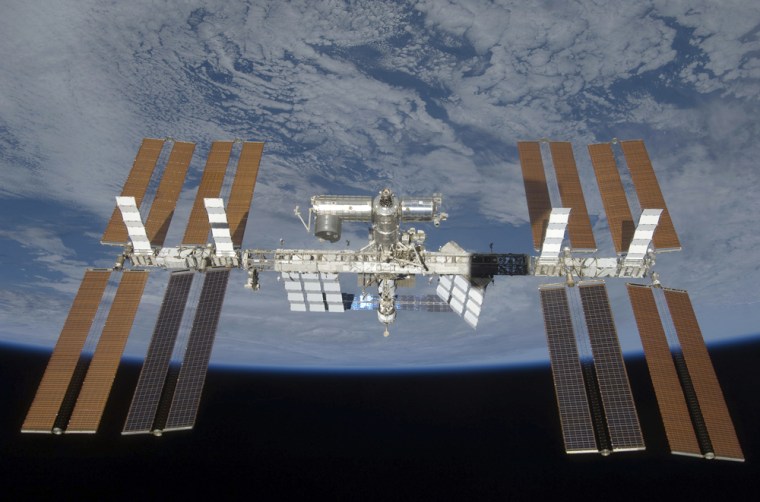NASA has been promising a rich scientific harvest from a permanent, well-equipped laboratory in Earth orbit where the absence of gravity would reveal secrets not possible anywhere else.
This week, with the international space station at full staff for the first time, the clock starts ticking for NASA and its international partners to begin making good on the pledge.
A Russian Soyuz capsule carrying cosmonaut Roman Romanenko, Canadian Space Agency astronaut Robert Thirsk and Europe's Frank De Winne blasted off early Wednesday. They are scheduled to arrive at the orbital outpost, a $100 billion project of 16 nations, on Friday, joining station commander Gennady Padalka, NASA flight engineer Michael Barrett and Japanese astronaut Koichi Wakata. The men will serve as the station's first live-aboard six-member crew.
"We've been building the international space station for 10 years now and we've finally gotten to a point now where it has some incredible laboratory facilities and six people on board the station to do some science," Thirsk said in a preflight interview.
Until now, most of the crew's time in orbit was spent just maintaining the station. With the additional help, NASA expects to more than triple the hours available for experiments in the station's three laboratories, ramping up gradually from about 20 hours per week to at least 70 when construction of the station is complete next year.
"We do everything in a gradual ramp-up as we learn to operate with a full crew aboard," Mark Uhran, NASA's assistant associate administrator for space station, told Discovery News.
But even within the agency, the program has skeptics.
"I hope the space station becomes extraordinarily, scientifically productive, but it is not today," said David Leckrone, the senior scientist for the Hubble Space Telescope, one of the agency's most successful and well-regarded programs.
Uhran said it is too early in the station program to gauge its success on scientific output, which so far has been meager. The agency's Web site lists 172 station-related research papers — many of which were not published in peer-reviewed journals. References to Hubble-related published science results, in contrast, number more than 3,500.
"Judging the station at this time on its scientific output is a red herring," said John Logdon, a space policy analyst with George Washington University. "It's just getting started."
Hubble itself didn't reach its scientific apex until decades after its development, construction and launch, Uhran added.
Robert Park, a physicist with the University of Maryland, sees a key difference between the station and Hubble.
"No one has any idea what to do with the space station. We know what to do with a telescope," Park told Discovery News. "The ISS is just a way of keeping human beings in space. It's flag-pole sitting."
Park said he and other scientists originally believed microgravity would be the Holy Grail for many materials science programs, such as the creation of large, nearly perfect protein crystals. Years of research on the space shuttle and previous space stations proved fruitless, he said.
"It turns out the force of gravity is so weak compared to inter-atomic forces that they just don't make an impact," he said.
About the only station science program that Park believes has merit, is the Alpha Magnetic Spectrometer physics experiment, which the United States had dropped from shuttle's manifest. The new NASA budget restores funding to fly AMS to the station next year.
More on |
